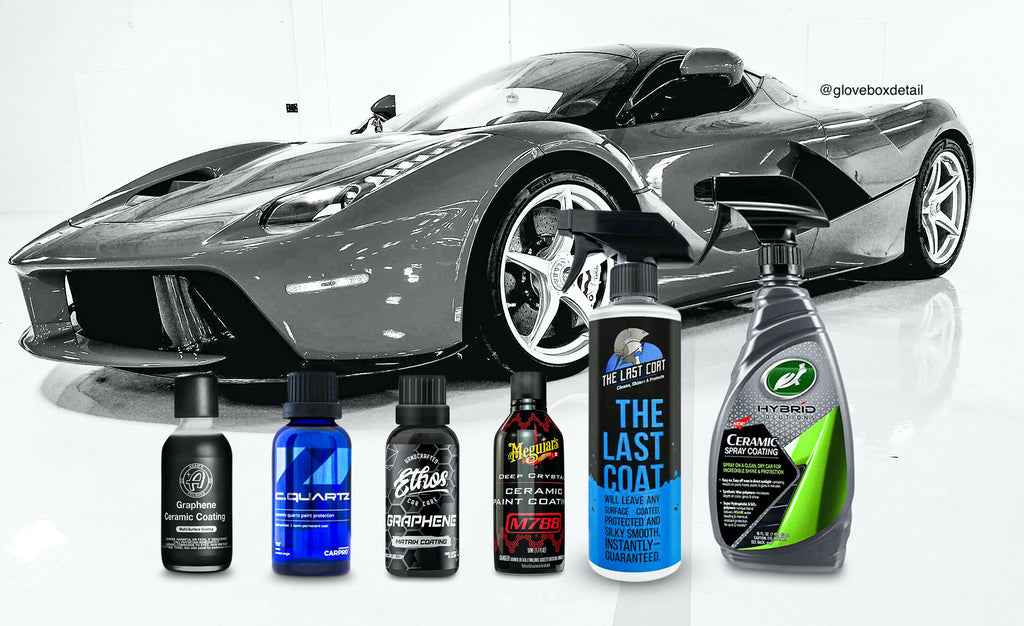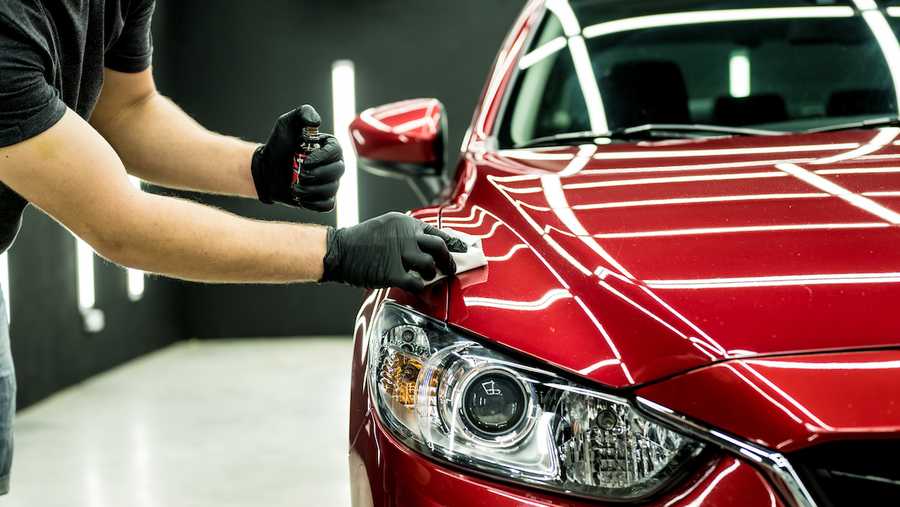Ceramic Pro: Protect and Improve Your Car with Advanced Modern Technology
Ceramic Pro: Protect and Improve Your Car with Advanced Modern Technology
Blog Article
The Science Behind Ceramic Layer: How It Boosts Your Automobile's Aesthetic and Sturdiness

Comprehending Ceramic Finish Chemistry
The chemical composition of ceramic coverings plays a crucial duty in identifying their resilience and safety homes on car surface areas. Ceramic coverings are typically comprised of silicon dioxide (SiO2), which is a main component giving firmness and heat resistance. Various other components such as titanium dioxide, silicon carbide, and polysilazanes are commonly included in boost certain residential properties like UV hydrophobicity, resistance, and attachment.
Silicon carbide is known for its abrasion resistance, making the ceramic layer long lasting and tough versus physical damages. Polysilazanes are utilized to improve the finishing's versatility and attachment to the lorry's surface area, making certain lasting protection. Comprehending the chemistry behind ceramic coverings is vital for both applicators and lorry proprietors to value the worth and advantages these coatings provide in maintaining the aesthetic charm and durability of vehicles.
Boosted Gloss and Mirror-like End Up
Recognizing the chemical make-up of ceramic finishings not only discloses their protective buildings yet also clarifies exactly how they add to accomplishing a boosted gloss and mirror-like surface on automobile surfaces. The key to the shiny impact exists in the nano-ceramic bits present in the coating. These fragments complete microscopic pores and imperfections on the surface area, producing a smooth and level coating. As light hits the coated surface area, it reflects evenly, providing the appearance of a deep, glossy luster. Furthermore, the chemical structure of ceramic finishings enables them to form a strong bond with the vehicle's paintwork, stopping oxidation and preserving the clarity of the coating over time. This bond likewise resists ecological contaminants, such as dust and grime, that can plain the luster of the vehicle. The combination of filling properties, light representation, and long-lasting protection makes ceramic finishes a popular option for those seeking a vivid and mirror-like surface for their lorries.

Impact on Paint Security and Longevity
Ceramic finishes for vehicles dramatically boost the durability and defense of the paintwork. By creating a chemically resistant layer on top of the car's clear layer, ceramic coverings act as a barrier versus different ecological impurities that can harm the paint over time. These finishes are designed to push back dust, water, road salt, bird droppings, and other unsafe compounds, lowering the risk of paint oxidation and corrosion. Additionally, the firmness of ceramic finishings gives a level of scratch resistance, helping to maintain the lorry's appearance for an extensive duration.
In YOURURL.com terms of long life, ceramic coverings supply a long lasting solution contrasted to conventional waxes or sealers. Generally, the protective buildings of ceramic coatings add dramatically Visit Website to maintaining the automobile's paintwork and enhancing its visual appeal over an extended period.
Resistance to Impurities and Harsh Aspects
With the safety shield offered by ceramic finishings versus different ecological pollutants and components, lorries have the ability to keep their immaculate appearance despite direct exposure to extreme conditions. Ceramic finishes create a solid obstacle that wards off water, dirt, dust, and other usual contaminants, stopping them from bonding to the automobile's surface. This hydrophobic nature not only makes cleansing simpler yet also decreases the threat of water spots and etching brought on by acidic pollutants. Furthermore, the chemical resistance of ceramic finishings helps shield the paint from bird droppings, bug splatter, tree sap, and other harsh materials that can harm the finish with time.
In addition, ceramic layers provide UV protection, securing the car's paint from the sun's damaging rays that can create fading and oxidation. This resistance to UV damage aids maintain the shade intensity and shine of the paint for longer durations. By forming a long-lasting and sturdy obstacle, ceramic coatings guarantee that the automobile's outside stays safeguarded versus a variety of contaminants and extreme aspects, protecting its aesthetic allure and longevity.
Application Strategies and Upkeep Tips
For ideal outcomes when applying ceramic layers to automobiles, using proper techniques and adhering to recommended maintenance practices are important. The application process of ceramic layer requires interest to information and precision. Before applying the ceramic covering, it is critical to completely clean and decontaminate the automobile's surface to guarantee proper adhesion. This involves washing, claying, and perhaps brightening the paint to develop a smooth canvas for the ceramic layer to bond successfully.
When using the ceramic finishing, it is advised to function in small sections to guarantee also insurance coverage and to protect against the product from drying out also promptly. Utilizing applicator pads or microfiber cloths, apply the finish in a crisscross or up-and-down activity, depending on the product's guidelines. After the covering is used, permit it to heal for the specified time prior to buffing off any residue.
In regards to maintenance, normal cleaning with pH-neutral soaps and staying clear of rough chemicals or rough tools will aid preserve the ceramic coating's honesty. Routine examinations for any kind of damage or endure the layer can also aid maintain its protective see here properties in time.

Final Thought
To conclude, ceramic finishing enhances a car's aesthetic appeal and sturdiness through its chemical make-up, supplying a shiny coating and shielding the paint from ecological contaminants. Its resistance to extreme components and ease of upkeep make it a preferred option for automobile proprietors wanting to protect the look of their cars. On the whole, ceramic layer is a medically backed option for preserving the look and durability of your car.
Understanding the chemistry behind ceramic finishings is essential for both applicators and automobile owners to value the worth and benefits these finishings offer in keeping the aesthetic appeal and longevity of automobiles. (ceramic pro)
Understanding the chemical structure of ceramic finishings not only exposes their safety buildings yet likewise sheds light on just how they contribute to attaining an improved gloss and mirror-like finish on automobile surfaces. By creating a chemically immune layer on top of the lorry's clear layer, ceramic finishings act as a barrier against different ecological impurities that can damage the paint over time. Overall, the protective properties of ceramic coverings contribute substantially to preserving the car's paintwork and boosting its aesthetic charm over an extended duration.
In final thought, ceramic finish boosts a car's visual charm and durability via its chemical structure, offering a glossy surface and protecting the paint from environmental pollutants.
Report this page